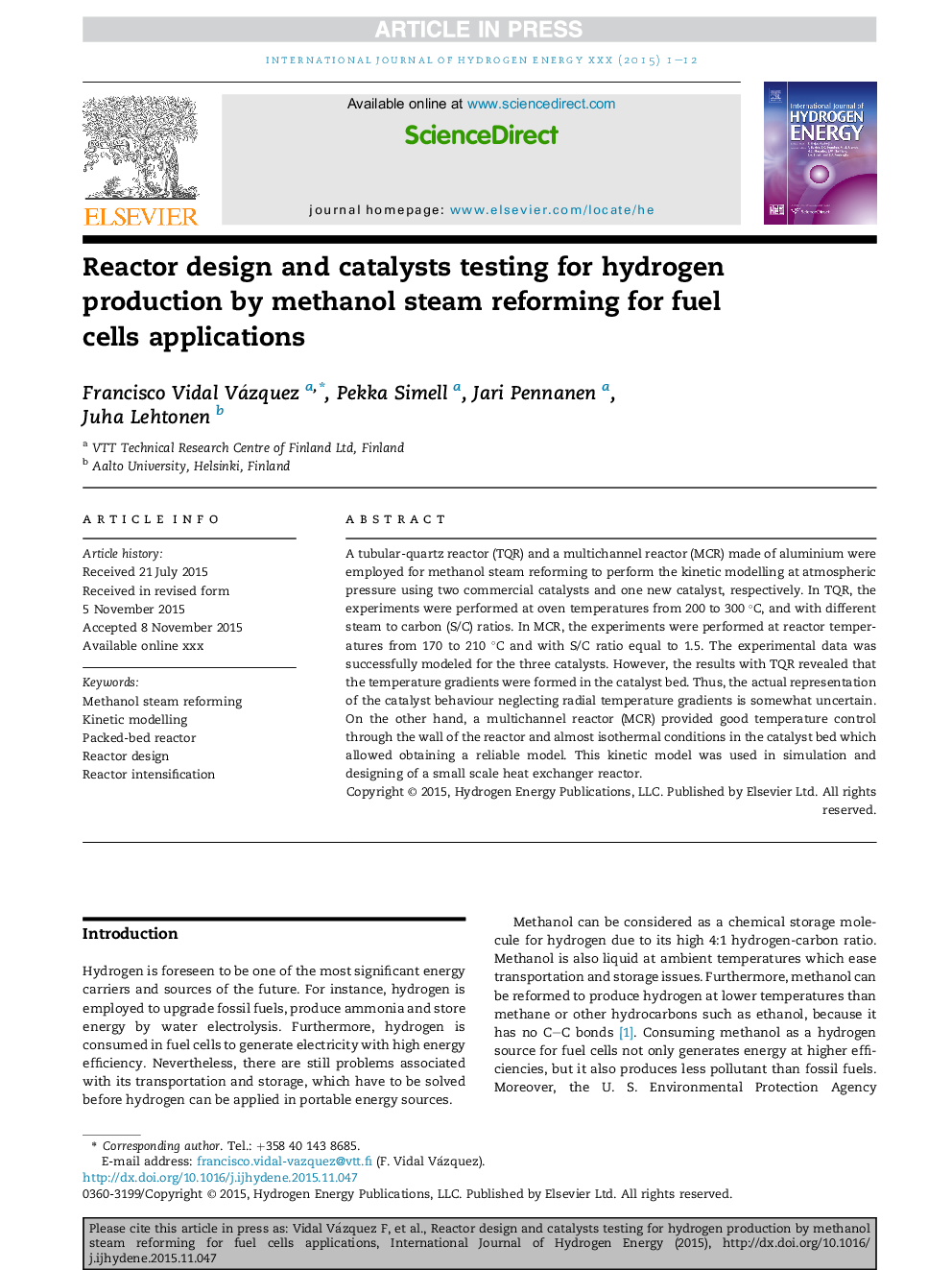| Article ID | Journal | Published Year | Pages | File Type |
|---|---|---|---|---|
| 7712574 | International Journal of Hydrogen Energy | 2016 | 12 Pages |
Abstract
A tubular-quartz reactor (TQR) and a multichannel reactor (MCR) made of aluminium were employed for methanol steam reforming to perform the kinetic modelling at atmospheric pressure using two commercial catalysts and one new catalyst, respectively. In TQR, the experiments were performed at oven temperatures from 200 to 300 °C, and with different steam to carbon (S/C) ratios. In MCR, the experiments were performed at reactor temperatures from 170 to 210 °C and with S/C ratio equal to 1.5. The experimental data was successfully modeled for the three catalysts. However, the results with TQR revealed that the temperature gradients were formed in the catalyst bed. Thus, the actual representation of the catalyst behaviour neglecting radial temperature gradients is somewhat uncertain. On the other hand, a multichannel reactor (MCR) provided good temperature control through the wall of the reactor and almost isothermal conditions in the catalyst bed which allowed obtaining a reliable model. This kinetic model was used in simulation and designing of a small scale heat exchanger reactor.
Related Topics
Physical Sciences and Engineering
Chemistry
Electrochemistry
Authors
Francisco Vidal Vázquez, Pekka Simell, Jari Pennanen, Juha Lehtonen,
